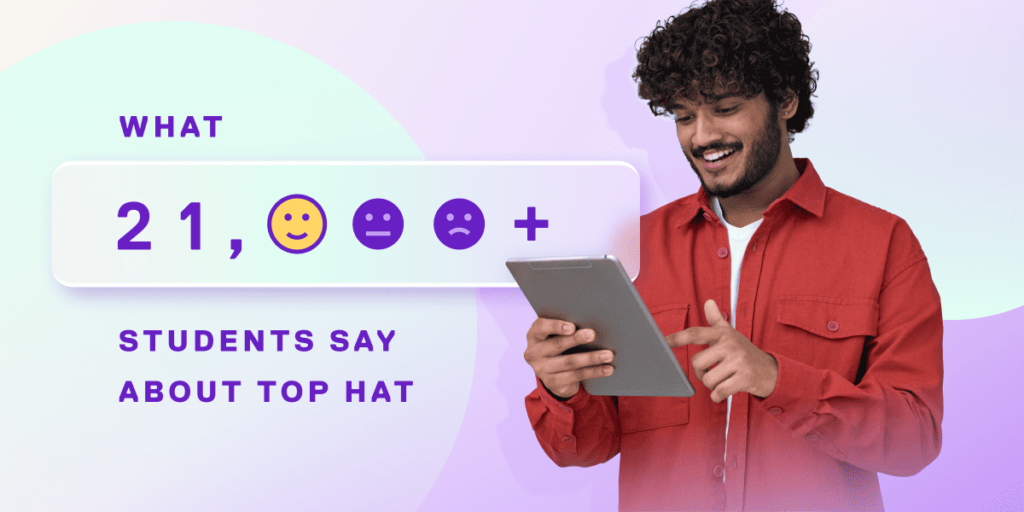When campuses closed their doors in late March due to the COVID-19 pandemic, higher education institutions turned to online classes so that learning could continue—and that shows no signs of letting up. Students and educators are increasingly understanding how important it is to embrace technology and the many advantages that online courses bring. The reality is that today’s students need to continue their education more than ever before: Not only do they want to feel connected during these uncertain times, but they also have a desire to further their future career options. Online classes afford students across the country a medium to do exactly that.
While instructors may be accustomed to conducting activities in a traditional classroom, they will quickly find that the tools and resources available today allow them to recreate these same techniques and strategies in an online setting. With a willingness to adapt, professors can continue to be successful by using online tools and platforms. This is reflected through the likes of online video conferencing, interactive quizzes, remotely proctored exams, online dissections and more. With online college courses, learning does not just stop in the midst of a pandemic.
Comparing traditional learning to online learning
Traditional classrooms have positive social aspects that can be lost in some online learning environments: There are certain hands-on activities that are beneficial to complete in person and within a team-oriented environment. Think-pair-share and roundtable-style discussions are classic active learning strategies that benefit from face-to-face student interaction. Traditional face-to-face classes provide teachers with opportunities to have a more personal interaction with students. This helps create feelings of community in the classroom, which is an important factor in student retention. Face-to-face learning enables instructors to visualize whether or not students are truly comprehending the material that is being taught. When living and learning on campus, students have opportunities to get to know one another inside and outside of the classroom.
Clearly, there are many benefits to traditional classroom environments, however, times are different today. Not only are there health concerns to take into account, but students and instructors may have part-time jobs, familial responsibilities, and other time constraints that make traditional education environments difficult if not impossible for many students in the midst of a global pandemic. Online programs are a way to overcome these obstacles and can still provide an effective and engaging educational experience.
What makes online classes so beneficial?
With online learning, the principles of an effective classroom remain the same, regardless of the modality. Communication and connection are still at the heart of what students are looking for from their college experience. However, many college students are growing to appreciate the flexibility that comes with online learning. As teachers begin to learn how to more effectively navigate this new technological medium, the quality of the educational services offered should only continue to increase as well.
The importance of flexibility
Online education provides both students and educators with much greater flexibility throughout the learning process. Instructors can work on their lessons and upload course materials at their leisure. As soon as that material is made available to students, they are able to access coursework, which they can complete on their own time. It is this flexibility that has made the online environment so appealing during this pandemic. Distance learning provides students with the ability to take on other roles, such as part-time jobs, childcare and other household responsibilities with greater flexibility. Instructors are also able to adjust their schedule to better accommodate their personal lives.
The advantages of digital media
While some teachers may find it difficult to lose a physical platform for lecturing, online classes now have multimedia options that more than make up for this deficiency. Lectures can be recorded with built-in discussion questions and opportunities for engagement that keep students engaged via active learning technology and then uploaded into the classroom for students to view on their own time. In online learning environments, teachers are able to upload course materials far ahead of the time they are actually needed. Because of this, students are better able to learn at their own pace and according to their own learning style There are a host of supplemental resources that can also be placed in the classroom to help enhance the overall learning experience, such as live office hours, polling tools, discussion boards and comprehension-gauging assessments.
Learning can take place at a student’s pace
This type of flexibility has become necessary for many individuals who would otherwise be forced to give up on their goal of earning a college education. By their very nature, online classes are accessible 24 hours a day as opposed to being confined to classroom learning. This enables students to study and learn whenever it is convenient for them as opposed to waiting for the instructor to be available. By using active learning technology that is available on students’ devices, they can learn no matter where they are and even access digital courseware from anywhere.
Lower costs
It is no secret that the price of a college education has risen in recent years. Online classes are not only more accessible to the general public, but they can also be offered at a reduced price point. Institutions have reduced expenses related to utilities and on-site staff, even though technology-related expenses can tend to rise. While there’s an ongoing debate regarding how much students will—and should—have to pay for their online classes this academic year, in general, expenses tend to be much lower when online classes are offered.
The future of education is upon us
Online learning will make up a much bigger component of higher ed going forward. As technology continues to advance, this medium of education should only continue to grow as well. This doesn’t mean that online education is not without its fair share of challenges. Without thoughtful instructional design purpose-built for active learning, educators are likely to encounter unmotivated students, stale lectures and ineffective assignments in their online classrooms.
Purpose-built for higher education, Top Hat’s student-centric experience engages and motivates learners with captivating virtual classroom features, interactive course content and built-in assessment capabilities. Top Hat syncs seamlessly with your LMS to ensure the right information flows into the administrative features you rely on to capture and report on student data. Click here to learn more about Top Hat’s suite of interactive tools to create engaging active learning environments in blended, online and face-to-face classrooms.


